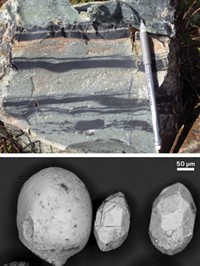Advertisement
Grab your lab coat. Let's get started
Welcome!
Welcome!
Create an account below to get 6 C&EN articles per month, receive newsletters and more - all free.
It seems this is your first time logging in online. Please enter the following information to continue.
As an ACS member you automatically get access to this site. All we need is few more details to create your reading experience.
Not you? Sign in with a different account.
Not you? Sign in with a different account.
ERROR 1
ERROR 1
ERROR 2
ERROR 2
ERROR 2
ERROR 2
ERROR 2
Password and Confirm password must match.
If you have an ACS member number, please enter it here so we can link this account to your membership. (optional)
ERROR 2
ACS values your privacy. By submitting your information, you are gaining access to C&EN and subscribing to our weekly newsletter. We use the information you provide to make your reading experience better, and we will never sell your data to third party members.
Synthesis
Pottery Dates Back 20,000 Years
Study pushes origins of craft 2,000 years earlier than previously known
by Sarah Everts
July 2, 2012
| A version of this story appeared in
Volume 90, Issue 27
Researchers digging in a cave in Xianrendong, China, about 100 km south of the Yangtze River, have used radiocarbon dating to establish that humans were making pottery as early as 20,000 years ago. This new work puts the origins of pottery some 2,000 years earlier then previously reported (Science, DOI: 10.1126/science.1218643). “Pottery making introduces a fundamental shift in human dietary history, and Xianrendong demonstrates that hunter-gatherers in East Asia used pottery for some 10,000 years before they became sedentary or began cultivating plants,” notes the team of researchers in China and the U.S. that made the discovery. Led by Harvard University anthropologist Ofer Bar-Yosef, the researchers propose that the pottery was used for cooking and possibly to grind grains, ferment alcohol, or extract marrow from animal bones. Pottery would have enabled hunter-gatherers to diversify their diet as they faced the challenges of the last ice age. The group determined the age of the pottery by radiodating 45 bone, charcoal, and skull samples found near the ancient pottery.




Join the conversation
Contact the reporter
Submit a Letter to the Editor for publication
Engage with us on Twitter